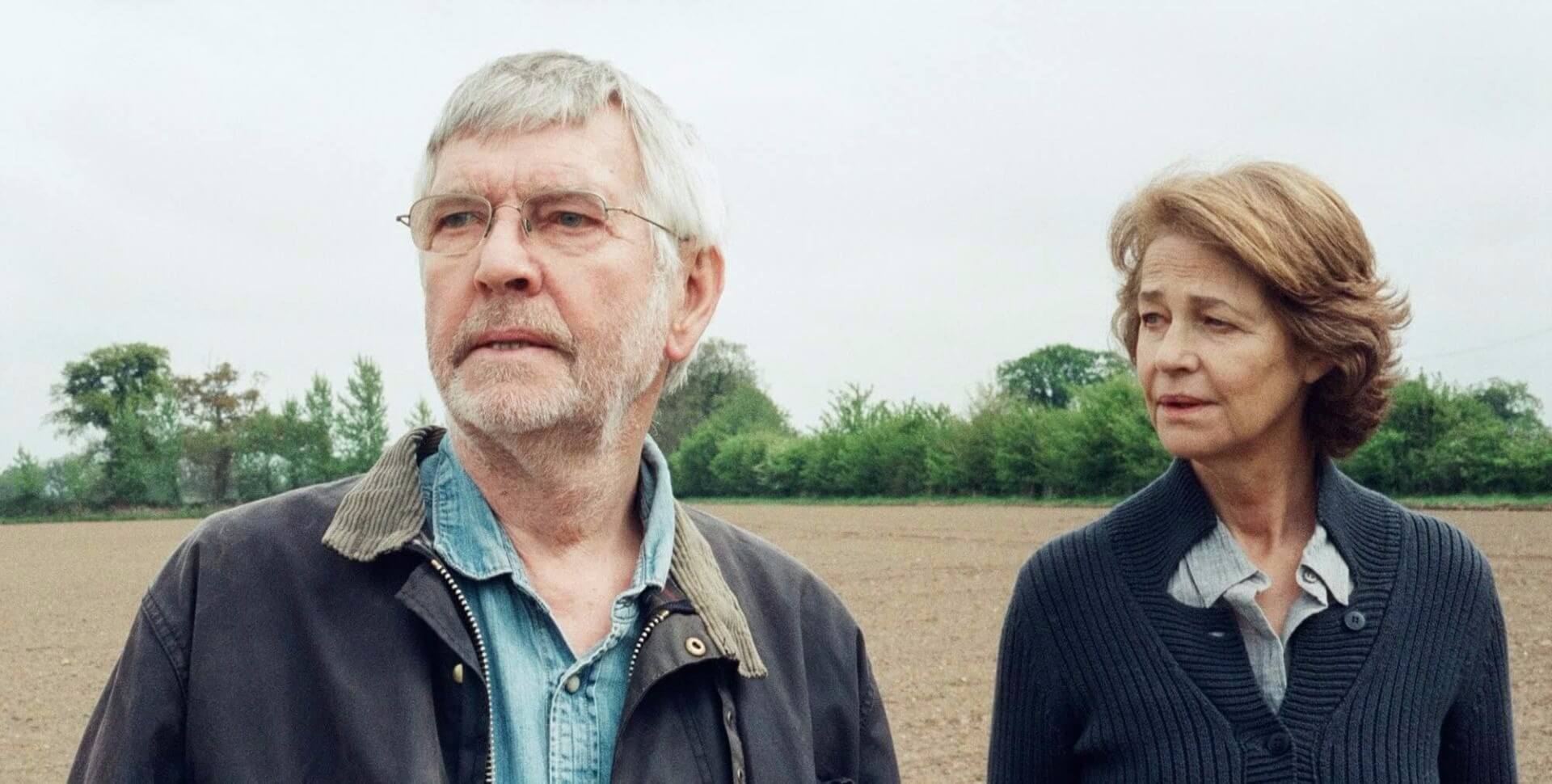45 Years [2015]: There is little to dislike about 45 Years. That mostly comes down to the fact that there is little to 45 Years to begin with. Not to say 45 Years is dull or without any substance, but rather that it is focused very much on one conflict in particular. The conflict in question, which threatens Kate (Charlotte Ramping) and Geoff’s (Tom Courtenay) marriage, is subtle, complex and haunting.
Focus peaking. 45 Years’ director, Andrew Haigh, homes right into what drives the scene and focuses all aspects of the scene towards it. We, as modern-day movie-goers, are used to the shot-reverse shot form of dialogue coverage, but 45 Years forgoes this technique for a far more restrained and subtle technique. 45 Years doesn’t necessarily cut to whoever is talking. Instead, it lingers on the main focus of the scene, despite who’s talking. This style of editing draws the viewer in. The lack of cuts means the illusion of film is maintained (as in real life we don’t abruptly change perspective every time someone starts talking). It’s here that the performances of both leads shine. Small shifts in expression or a flicker in the eye change the whole bearing of a scene and the extended takes mean that the actors can really cast a line and pull us in.
Shifty business. The film’s technical mastery doesn’t end there, however. 45 Years manipulates framing brilliantly. Coupled with long takes, some frames are so comfortable and non-descript that you forget that there hasn’t been a cut in absolutely ages. In fact, I’d be surprised if there weren’t moments where you found yourself forgetting you were watching a film. Sometimes the camera will slowly shift across the scene from subject to subject so seamlessly and smoothly that the need for a cut is simply not there. The film also makes great use of its setting and drops us into the English countryside with vast landscape shots which feast the eyes. While I’m going on about framing, it’s worth mentioning the film’s visual restraint. The colors are generally desaturated, the color palette is limited and there are very few, if any, close-ups. This restraint really helps paint the idyllic, grounded and domestic tone of the film. Despite the lack of visual flair, there is beauty in the functionality and pragmaticism of the cinematography.
From script, to mouth, to screen. With all the above said, none of it would’ve mattered if it was built on the foundation of a rubbish script. Thankfully, the script is as solid as a wrecking ball thrown into a black hole. Subtle symbolism and dialogue which is consistently more than the sum of its parts mean that the film is dense with meaning and emotion. Themes are well realized and the tone and characters are consistent throughout. Clever pacing and structure mean that tension is slowly built and maintained as the end draws nearer. By the end of the film, you’re left so immersed and invested in Kate and Geoff’s nuanced relationship that at times it feels like you’re watching a documentary at times. Which brings me cleanly to the performances. With only two leads it can be difficult for there to feel like something important is happening at any given moment, but the Rampling and Courtenay’s grounded and subtle performances add a weight to each moment which makes all the difference. They exhibit a full range of emotion without a single error to be seen and their chemistry sells their 45-year marriage with ease.
Cancel your trip to the English countryside, 45 Years will take you there faster, cheaper and with only a few repressed emotional issues.

Related: The film 45 Years is featured on Borrowing Tape's Best Films of 2015 list.
Watch 45 Years on iTunes
